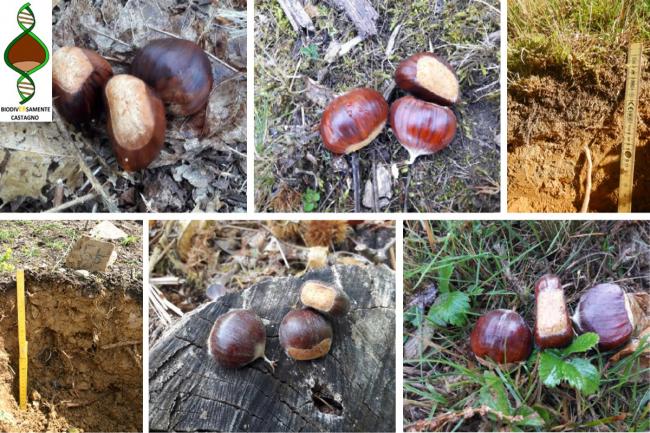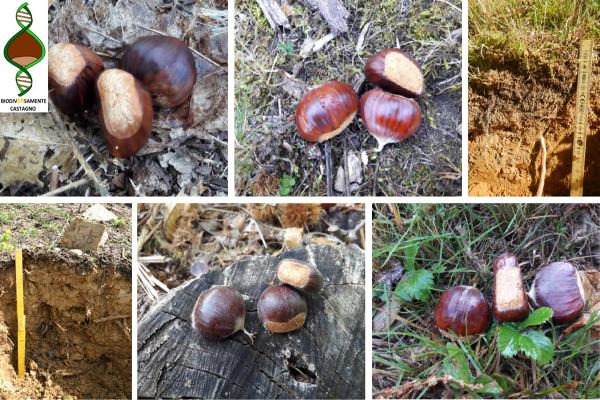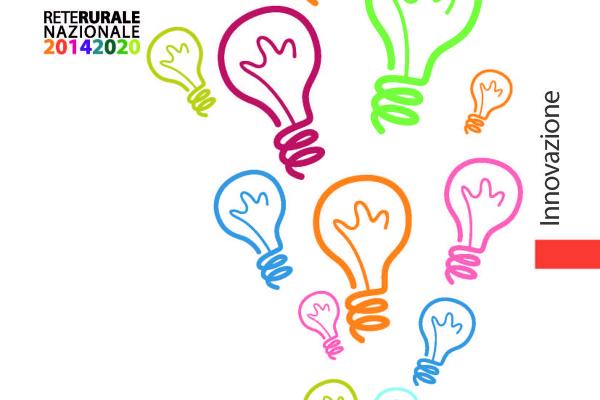Biodiversamente Castagno: “Guidelines for the preservation and enhancement of biodiversity the chestnut in Emilia Romagna"

- Set a grouping shared by the scientific community and castanicoli manufacturers to learn about the genetic variability of the chestnut germplasm.
- Studying, in some among those sites from which genetic material is taken, the soil and its biodiversity through appropriate indices.
- Withdraw from the collection fields available in Emilia Romagna, the regional indigenous varieties present on and engage at two farms actual partners.
- Set, define and share "Sometimes guidelines to the study, preservation and enhancement of biodiversity of the Chestnut" by applying germplasm study techniques also in connection with different climatic situations.
Genetic fingerprint and determination of the system castanicolo biodiversity; study of biodiversity soil and climate environments in connection with some sites collection of genetic material - activity 'to keep the biodiversity' a genetic risk of erosion; definition of "guidelines for development and preservation of the system in chestnut biodiversista Emilia Romagna.
ACTION EXERCISE OF COOPERATION
This action includes the organization, activation and maintenance of the Innovation Operating Group. I.TER will take on the role of coordinator of the operation and management of the Operational Group (GO), planning and implementing all the technical initiatives necessary for the realization the Plan.
The coordination activity will be developed with at least 2 meetings a year, organized through the use of technical and secretarial staff.
Throughout the duration of the Plan, the Project Manager will perform a series of functional activities to ensure the correct application of the contents of the Plan, and in particular:
monitoring the progress of the work; evaluation of results during construction; the analysis of deviations, comparing the intermediate results achieved with those expected; the definition of corrective actions.
At the end of the Plan and at the end of each year, the Project Manager, together with all the partners involved, will complete the analysis of the intermediate and final results obtained, as well as the analysis of their compliance with the Plan.
ACTION OF STUDY OF CHESTNUTS PRESENT IN COMPANIES RELATED TO GOI
This action provides an interdisciplinary approach to study and verify the characteristics of chestnut trees present in the partner companies and in the collection fields. GO will start a collection of information regarding the organization and management of the chestnut grove in the participating companies in order to optimize the setting of the activities in the field, training and dissemination provided for in the Operative Plan I.TER and UNIBO-DIpSA provide a first inspection of all the participating farms to gather information on the management of the chestnut grove (age, phytosanitary status, etc.) In addition, special surveys will be organized in the collection fields of Zocca and Granaglione. The final part of this study includes a meeting with the GOI participants aimed at sharing and validating the following documents useful for the realization of the Operative Plan:
- list and location of the sites, representative for the pedological environment and management of the chestnut tree;
- definition of the sampling protocol to be used for sampling for genetic, pomological and pedo-environmental analyzes;
- definition of the molecular profiles of chestnut accessions in the Emilia Romagna region and development of tools to improve varietal certification activities in the species.
ACTION 1 GENETIC FOOTPRINT AND DETERMINATION OF THE BIODIVERSITY OF THE CASTANICOLO SYSTEM
The DipSA Research Unit proposes the molecular characterization of the 50 chestnut accessions present in the collections on the ER Region . Microsatellite markers will be selected on the basis of proven efficacy both in studies aimed at varietal identification and in studies aimed at determining the parental relationships existing between the analyzed ecotypes / varieties present on Italian and European territory. We will define a genetic identity card of each ecotype / accession with a set of microsatellite markers and identify at the same time the cases of homonymy and synonymy within the different collections. In this regard, a phenotypic and pomological characterization of the genotypes in the collection will
be added to the molecular analysis.
The clear value of this work will be reflected in the impact on the value and preservation of local varieties, with consequent enhancement of the product and of the territory in which the chestnut woods are located, and above all, in landscape and environmental terms.
ACTION 2 THE STUDY OF BIODIVERSITY OF PEDOCLIMATIC ENVIRONMENTS IN CONNECTION WITH SOME COLLECTION SITES OF THE GENETIC MATERIAL OF ACTION 1
In order to evaluate the biodiversity of the soil, specific studies will be carried out to integrate the study of the chestnut genetic imprint in some sites of greatest interest.
The farms associated with the GOI are located in different pedological landscapes representative of the Emilian chestnut tree environment.
It is planned to study 12 representative sites selected within the partner companies in the study area.
Each site will be characterized by a soil characterization, through the study of soil profiles in order to verify the main physical-chemical characteristics supported by appropriate functional monitoring to understand the biodiversity of the soil.
ACTION 3 PRESERVATION OF BIODIVERSITY AT RISK OF EROSION
The techniques and practices necessary to safeguard and reinsert typical plants at risk of genetic erosion will be evaluated, also considering the pedoclimatic characteristics found in the company as well as in terms of consumer interest and the implementation of the company biodiversity. These plants may derive from material taken from the collection fields investigated, whose permission has been granted by the managers with appropriate attached letters, or from other entities studied in action 1. The Working Group at this stage will share an action protocol concerning the levy , conservation of the material and
placement in the field through appropriate grafting techniques. Particular care and attention will be given to the health check of the material used in order to promote the success of the graft and to avoid the spread of adversity. This action, in addition to launching a concrete mode of storage of material at risk of extinction at companies of chestnut growing, also intends to initiate demonstration situations of grafting, care and attention of the chestnut grove.
ACTION4 DEFINITION OF" GUIDELINES FOR THE VALORISATION AND PRESERVATION OF THE GERMAGLASMA DEL CASTAGNO IN EMILIA ROMAGNA
The present Operative Plan aims at different results that all converge on the main objective that "binds" the participants to the BIODIVERSAMENTE CASTAGNO GOI, or to share and define the "guidelines for the enhancement and preservation of the chestnut germplasm in Emilia-Romagna". The goodness of the final result will be determined by the ability to work collegially, testing and verifying the data collected in the field in the territories belonging to the associated farms to share and then define the best genetic characterization methods linked to the enhancement of the product (fruits or flour ). The guidelines will have to be validated by the farms and the organizations participating in the GO and will serve to promote and enhance the role of guardian of the ecological biodiversity (genetics, plant and territory) of the chestnut grower. Special excursions will also be organized, in which the GOI representatives will attend, at the member companies and possibly at the collection fields. In such moments the working group will be able to compare with the objective to define the "guidelines for the valorization and preservation of the chestnut germplasm in Emilia-Romagna.
COMUNICATION ACTION
1. Definition and promotion of the slogan" CASTANI-CO "so that it becomes a symbol of group work, the slogan will be" launched "also on the PEI network to start exchanges with any similar realities (by I .ter);
2. Press conference organization at the start of the plan and sending invitations;
3. Definition of press to the main localnewspapers
4. Organization of a technical seminar;
5. Definition of Pei card;
6. Contacts with PEI network;
7. Organization of 2 demonstration activities (2nd and 3rd year);
8. Creation of web pages in the I.TER portal
9. Radio broadcasts of "rural communication" at Radio Budrio.
10. Preparation of at least 1 article for regional and national sector magazines
11. Organization of a final conference of presentation of the results;
12. ROLL UP which will show the logo and the slogan of the project
13. SPEAKING POSTCARDS; I.TER plans to produce 1000 postcards aimed at disseminating, also through qr code connected to "Terra Terra" episodes, the role that chestnut woods have in the sequestration of carbon
14. 1 Information leaflet "The fruit chestnut and its sustainability" "which will show guidelines of good agricultural and cultural practices aimed at favoring the sequestration of carbon and the quality of the product".
15. VIDEO aimed at communicating the sustainability and values of the fruit chestnut.
16. Organization of two traveling comparisons by bus ("Castanibus").
TRAINING ACTION
To promote a concrete understanding of what is meant by biodiversity and what are the factors and parameters that characterize it is envisaged, in the initial part of the plan, an individual training activity (coaching) aimed at all the partner companies. The proposal N 5015578 titled BIODIVERSAMENTE CHESTNUT: PRESERVATION AND VALORISATION OF BIODIVERSITY OF CHESTNUT inserted by I.TER in the Green Catalog provides 8 hours of training distributed over the first year of activity.
| Titolo/Descrizione | Url | Tipologia |
|---|---|---|
|
Sito web del progetto
|
Sito web
|
|
|
UniBO Magazine: L'Alma Mater scende in campo per sostenere il castagno da frutto
|
Materiali utili
|
|
|
Presentazione dei Gruppi Operativi al Salone Nazionale marroni e castagne d'Italia
|
Materiali utili
|
|
|
I castagneti da frutto per il sequestro di carbonio - Rivista Agricoltura marzo/aprile 2018
|
Materiali utili
|
|
|
Poster BIODIVERSAMENTE CASTAGNO Rete EIP
|
Materiali utili
|
|
|
Marroni italiani: un aiuto dalla genetica per tutelarli e valorizzarli Rivista Vita in Campagna, ottobre 2020
|
Materiali utili
|
|
|
Castanibus 2020 TerraTerra - La castanicoltura si muove!
|
Materiali utili
|

